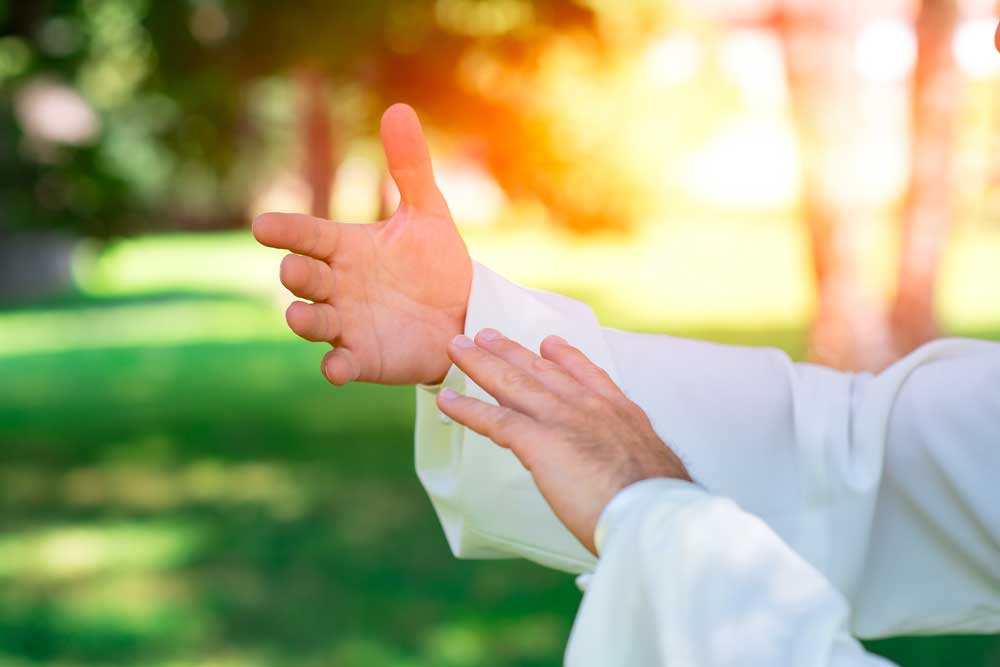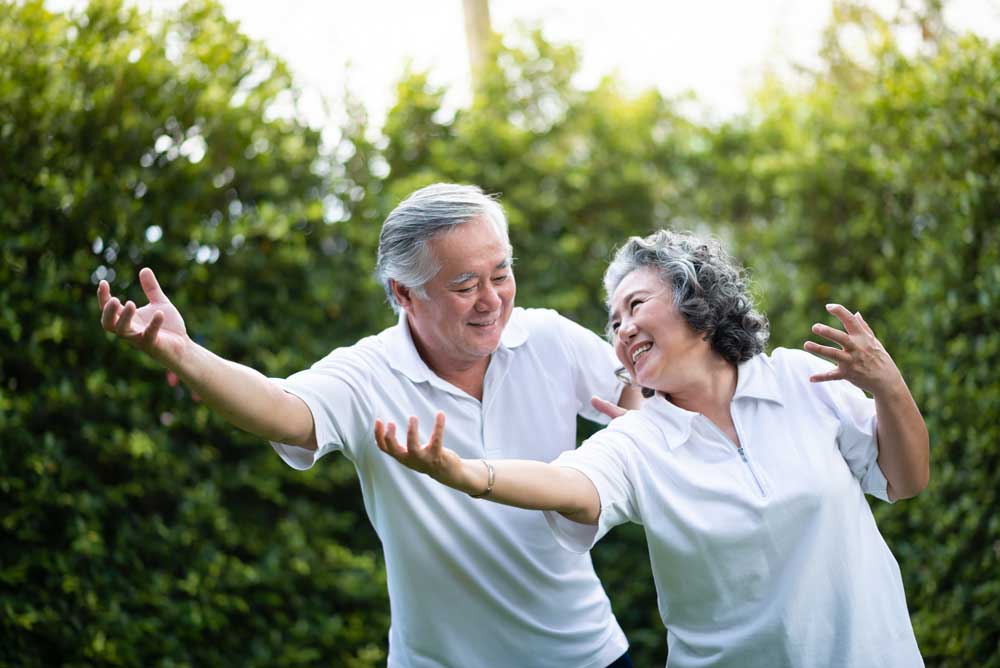Try Qigong Tai Chi, a traditional system of movement that spruces you up. By Fatema Rajkotwala
Feeling tired or drained more than usual lately? Looking at others around you and wondering how they aren’t as spent as you and maybe even raring to go for a bout of socialising in the evening? Unless you have a legitimately physically active day, this is not supposed to be your normal, no matter what your age. I have been rolling my eyes lately each time I hear 30 somethings say, “We’re old now.” I understand that office work during our youth is mentally draining and in our later years, our bodies slow down but I truly believe that our mental and emotional age, that is to say, the way we think and feel about ourselves ends up defining how we live our lives. If our bodies are in discomfort, chronic pain or dis-ease, our mind loses its willpower to be strong and as the negative self talk builds up, we feel older than we probably need to feel. So, what can be done about this, when we have reached a time in a our journey where most physical forms of exercise that can help heal and relax the body are not advisable but our body is reminding us that we are old daily?
 In some ways the answer comes down to one word: Grace. No, I am not sitting here as a young person with few odd years of Yoga practice and less than half time in life experience, advising you to force yourself to bear the real changes of old age with a resigned acceptance. Instead I’d like to introduce you to the loveliness of Qigong Tai Chi. If you’ve heard of Tai Chi, you’ll know that is a form of martial arts that uses various movements for combat and defence. Over the years though, Qigong was developed as a form of harnessing and creating energy while releasing blockages within our energy channels. It therefore became widely used by masters and common folk to increase their inner powerhouse of energy to be able to be stronger and have more reserve energy to share and heal those in need. Tai Chi is widely practiced as a form of movement-based meditation world over and has been supported by a lot of scientific proof as regards its benefits and capacity to restore, rejuvenate and realign discrepancies that may have developed within the systems of the body and mind.
In some ways the answer comes down to one word: Grace. No, I am not sitting here as a young person with few odd years of Yoga practice and less than half time in life experience, advising you to force yourself to bear the real changes of old age with a resigned acceptance. Instead I’d like to introduce you to the loveliness of Qigong Tai Chi. If you’ve heard of Tai Chi, you’ll know that is a form of martial arts that uses various movements for combat and defence. Over the years though, Qigong was developed as a form of harnessing and creating energy while releasing blockages within our energy channels. It therefore became widely used by masters and common folk to increase their inner powerhouse of energy to be able to be stronger and have more reserve energy to share and heal those in need. Tai Chi is widely practiced as a form of movement-based meditation world over and has been supported by a lot of scientific proof as regards its benefits and capacity to restore, rejuvenate and realign discrepancies that may have developed within the systems of the body and mind.
How exactly does Qigong Tai Chi work?
‘Qi’ or ‘Chi’ means energy. ‘Gong’ or ‘Kung means work. so, in essence, Qigong is to exercise your internal energy. In Yoga this is referred to as ‘Prana’. When there is a free-flowing passage within our body for energy, our Chi is high and plentiful. Blockages develop in the form of gross manifestations as blood circulation, gas, mobility within the joints, clear respiratory tract and good elimination of waste or as subtler effects such as mind blocks, negativity, imbalance of nervous energy (hyperactivity or lethargy), impulsivity, poor reflexes, lack of clarity in thought and essentially and imbalance in the various key areas where there is a nexus of essential meridians (channels of energy lines as per the Chinese tradition) or ‘nadis’ that eventually lead to an imbalance in ‘chakras’ as per Yoga and ‘doshas’ as per Ayurveda.
These blockages develop gradually through lack of movement, excess movement, lack of sleep or excess sleep, lack of nutrition or excess undigested food, natural degeneration of muscle strength, lubrication within joints and slowing down of the efficiency of bodily processes due to advancing age or simple lack of positive thinking as negative thinking drains the body’s capacity to feel strong and therefore results in aches and pains and eventually diseases.
Qigong works beautifully for seniors in this regard. Qigong movements are slow-paced, gentle, rocking motions with a mindful focus on breath synchronisation that facilitate digestion and leave a deep relaxing effect on the body and mind. Most forms of exercise that may be inaccessible to some can at least learn and practice these set of movements and aid their systems within. Personally, I enjoy practicing Qigong even in a swimming pool as water in all forms helps me relax and releases soreness in my sometimes overused joint regions. This is after realising that all the magic of therapeutic healing happens during relaxation. When we relax, our energy flows more freely and blockages release. This is why we feel better, healthier and more energised even after a few minutes of conscious relaxation during Shavasana or Yoga Nidra than a few hours of unrestful sleep.
Learning to let go
In our sunset years, the body begins to slow down to prepare us for the eventual goodbye to this alluringly beautiful world. Our joints begin to dry up and restrict movement due to wear and tear and signal us to move slower. Our muscles reduce in size to in order to waste lesser of the body’s vital energy needed in the upkeep of muscles. Our appetite lessens to ease the workload of digestion. The mind also is more ready to be religious, meditative and spiritual. This is the body’s graceful way of transitioning us into our final stage of life or Sanyasa ashram, after the previous four stages of life – Brahmacharya (study phase), Grihasti (family life), Vanaprastha (Jungle life, i.e. letting go of worldly possessions and living simpler).
Grace and poise within any tough stage of life and the ability to accept our current realities, letting go of our attachments, expectations and need for control and recognising our resistance to change – this is essentially what we indirectly try to apply and practice throughout our lives. Qigong’s 18 movement can be a wonderful therapy to help teach the body to flow along, slow down, relax and slowly our mind will follow and harness the storehouses of grace and energy within to deal with this chapter in life.









Need to know more.
Comments are closed.